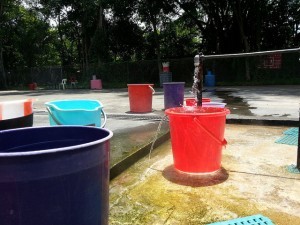Why not treat yourself to a visit to one of Singapore's quaintest attractions? Find out all about this quirky little place below.
The history of the Sembawang hot spring
Found in 1903, this little spring was almost turned into a commercial venture. However, this fell through, mainly due to the fact that nobody knew where the water was coming from and if it was sustainable. However, more than 100 years later, the water is still running and is boiling hot! The spring was discovered by the son of Seah Liang Seah, the famous Chinese pioneer and namesake of many a steamboat buffet. A well was built by the spring, and it became popular with villagers who used the water for its healing powers. The spring became more and more famous, eventually attracting the attention of a soft drinks firm. They began to bottle the water but the flow was interrupted after being hit by a Japanese bomb during 1942. After conquering Singapore, the Japanese eventually began to build baths in the area. Interestingly, the spring was visited most frequently by gamblers, who took good luck baths before heading to the casino. Later, the Sembawang Air Base acquired the land but agreed to preserve the spring, due to its popularity.
How to get to Sembawang springs.
The spring is located on Gambas Avenue, between Sembawang and Yishun. Exit the Yishun MRT from exit C. If travelling by bus, take the 858 or 969 and get off 4 stops after exit C at Sembawang Road. Walk towards the overhead bridge and continue straight down the road. Take the left at the first junction where you can see the HDB Centre of Building Research. Keep going along the road until you see the two red signs. Enter through the gate and follow the path which will take you to the hot spring. The gate will only be open from 7.00 am to 7.00 pm daily.
The spring itself
The spring is locked inside a concrete structure but there is access to the hot water from a tap. Many people collect water in buckets and fill a paddling pool in order to enjoy the spring. Some people even take a shower directly from the taps, there are more than one tap, so don’t worry if some are already in use. The spring is visited by all ages looking to feel the benefits of its supposedly restorative properties for skin complaints such as eczema and conditions such as arthritis. If you ask the caretaker, he will provide you with a bucket and a towel to make your own foot bath. Some visitors even bring eggs to boil as a snack! Whilst the experience is not exactly like that of a first class spa, it is certainly much cheaper (free, in fact) and a lot more fun.






